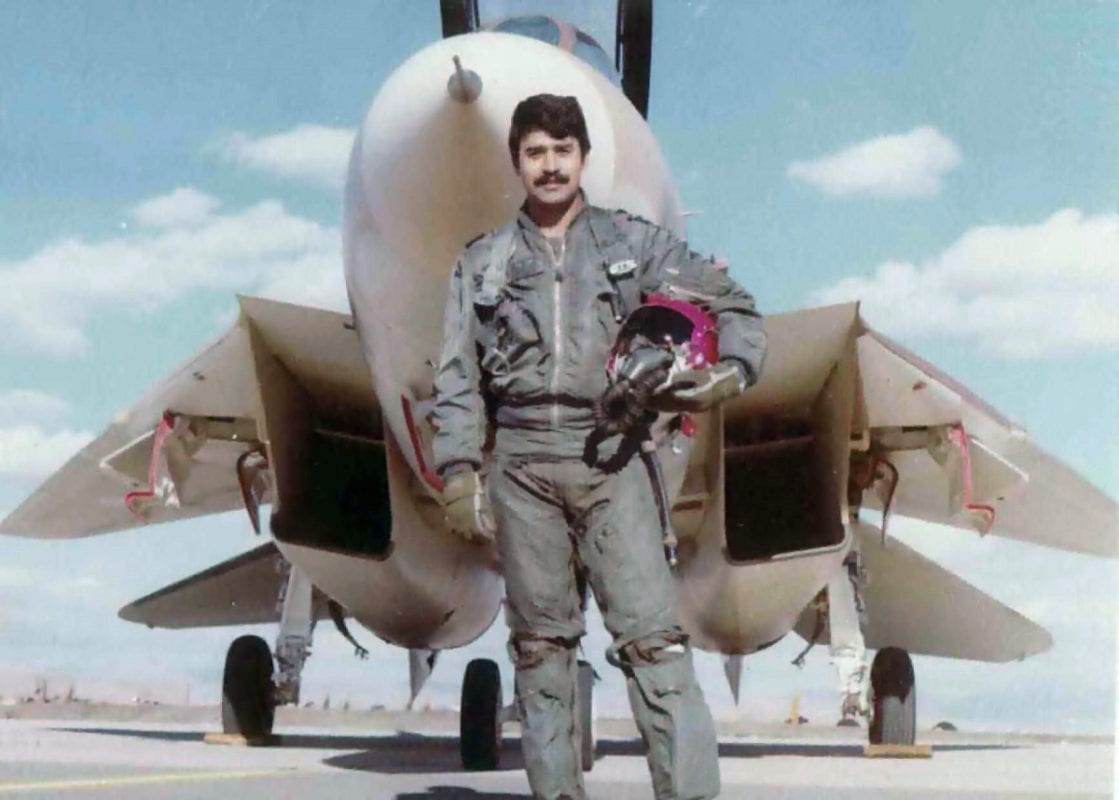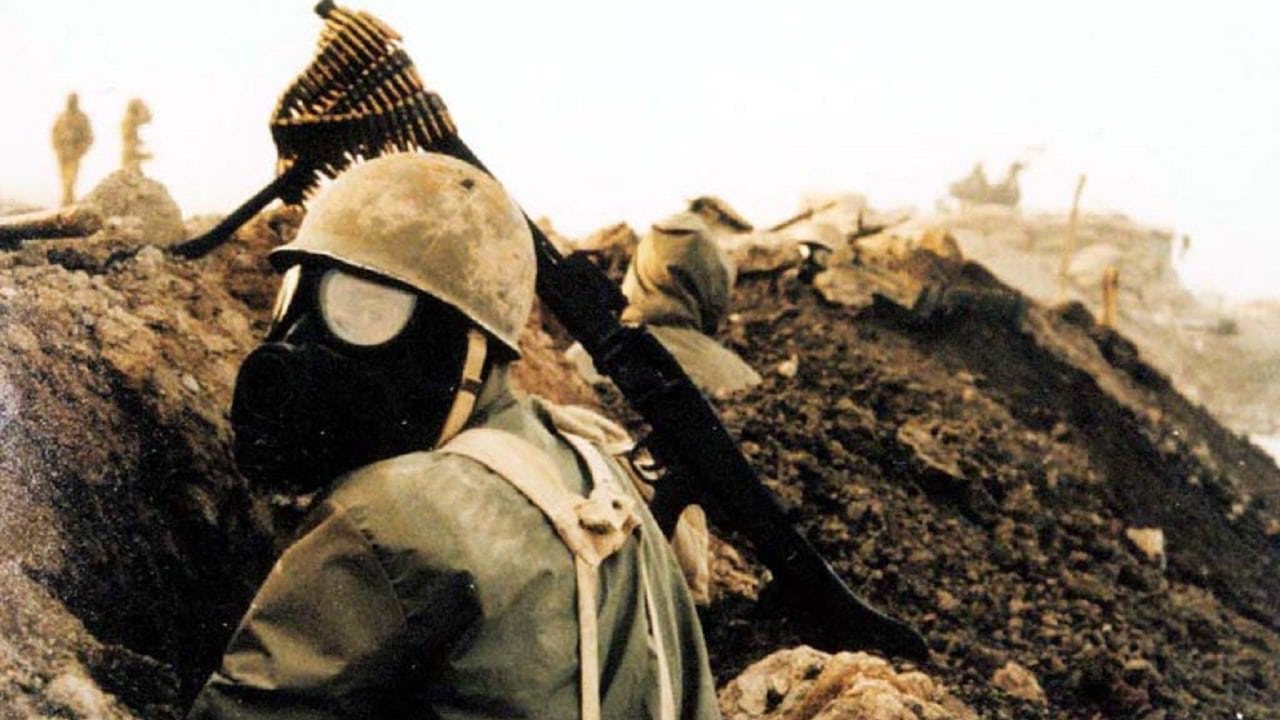Middle East expert and In-House Defense Expert Maya Carlin on why the Iran-Iraq War was so horrific: When Iraq invaded Iran in 1980, President Saddam Hussein expected to seize control of his country’s neighbor in a matter of weeks. Following the overthrow of the Shah and the resulting Iranian Revolution in 1979, Iraqi officials anticipated that Iran’s lingering domestic turmoil had made it brittle and weakened its defense capabilities.
(Subscribe to Our YouTube Channel Here)
The war dragged on for eight years, making it the longest conventional conflict of the 20th century. The incorporation of chemical weapons, martyrdom missions and asymmetrical warfare tactics made the Iran-Iraq War especially devastating. Iran lost at least a quarter of a million soldiers, some of which were victims of Iraq’s chemical weapons campaign.
Iran-Iraq War: Why?
The roots of the Iran-Iraq war include religious and ideological differences. While both nations are Muslim, Iraq remains a Sunni-majority state, while Iran is a Shiite-majority polity. Prior to the 1979 Iranian Revolution, the Shah projected a pro-Western and anti-socialist agenda. In contrast, the ruling Ba’ath Party in Iraq projected a pro-Soviet and socialist agenda. After the Revolution, the Ba’athist leadership led by Saddam Hussein prioritized preventing the exportation of the Iranian Revolution to Iraq, since the Shiite factor could threaten Saddam and his Sunni-dominated party.
Nearly ten months following the overthrow of the Shah, a group of Iranian students stormed the U.S. Embassy in Tehran and took more than 60 U.S. diplomats and civilians hostage. Known as the Iranian hostage crisis, this event garnered international condemnation and isolated the regime further. The hostage crisis, coupled with the regime’s anti-Western ambitions, pushed U.S. policies to tilt toward Baghdad during the war. Additionally, a subsequent U.S. arms embargo imposed on Iran following the hostage crisis limited the regime’s weapons influx.
Birth of the Basij
Iraqi forces launched a series of surprise airstrikes targeting Iran’s Air Force arsenal on Sept. 22 1980. While the barrage inflicted some damage, the majority of Iran’s fleet survived the assault. Within 24 hours, Iraq launched a ground invasion in three simultaneous attacks. Iraq’s offensive actions were expected to throw Iran’s newly installed regime into a tailspin. However, Iran’s quick counterattacks prolonged the warfare.
Reverence for the Iranian regime resulted in the establishment of the Basij militia a few months after the war began. The Basij was a volunteer militia that was open to Iranian males between the ages of 18 and 45. It was created by Ayatollah Ruhollah Khomeini, who notably declared that Iran could never be destroyed if it had a 20-million-man militia. Throughout the war, thousands of volunteers joined the Basij and helped shape the outcome of the conflict. The untrained and poorly armed volunteer force carried out human-wave attacks during the war that reportedly helped clear mines for the professionally trained and equipped Islamic Revolutionary Guard Corps. Ultimately, Iran’s larger population and general zeal provided a formidable counter to Iraq’s more sophisticated attacks.
The self-sacrifice of the Basij units, who were promised martyrdom status upon death, coupled with Iraq’s smaller military force, led to a turn in warfare. After two years of fighting, Iraq’s military was crumbling. Its forces fell from 210,000 to 150,000 troops, and Iran had captured more than 450 tanks and armored personnel carriers. By 1981, Iraq’s air force had only 100 intact fighter-bombers and interceptors left.
Due to its wavering position, Iraq withdrew from the Iranian territory it seized at the onset of the war and proposed a cease-fire in 1982. Khomeini refused to accept and vowed to continue fighting until the Ba’ath party was replaced by an Islamic republic, thus officially incorporating the exportation of Iran’s revolution to its military’s goals.
Iran-Iraq War – Horrifying Escalation
An onslaught of Iranian advances and a shrinking military force led Hussein’s regime to contemplate a change in tactics. In the early 1980’s, Iraq benefitted from technical cooperation with Egypt, which had used chemical weapons against Yemen a couple decades earlier. In 1983, Iraq used chemical weapons for the first time against Iranian troops, justifying this horrific escalation by claiming Iran used the tactic first. During the 1983 Val Fajr II campaign near Haj Umran, U.S. intelligence reports indicate that mustard agent was used by Iraqi forces.
Iraq used mustard agent in various other battles, and this resulted in approximately 100,000 casualties. This number does not include civilian casualties, nor does it account for the long-term health consequences that impacted Iran’s border populations. According to a Science report, nearly 56,000 survivors of Iraq’s chemical attacks continue to seek medical treatment decades later.
While Iraq and some U.S. officials accused Iran of using chemical weapons as well, evidence reflecting this claim did not exist. A 1987 U.N. report concluded that “Iraqi forces have been affected by mustard gas and a pulmonary element, possibly phosgene. In the absence of conclusive evidence of the weapons used, it could not be determined how the injuries were caused.” When the Iran-Iraq war evolved into the “Tanker War” in the-mid 1980’s, the U.N. became more involved in the conflict. It called for an immediate cease-fire between the combatants in 1987. Iran initially refused, but a year later Tehran agreed to the halt in warfare.
Iran-Iraq War: A Pointless Conflict?
Despite eight years of brutal fighting, neither Iraq or Iran could claim victory in the end. Hussein’s Ba’athist party and Iran’s authoritarian regime stayed in power, and all border disputes remained unsolved. While the exact number is unknown, experts assert that nearly 500,000 to 1 million people perished throughout the war, and approximately 1 million to 2 million were injured. Additionally, both countries were left in economic turmoil. Iraq’s use of chemical warfare and sophisticated weaponry in the conflict likely influenced Iran’s growing prioritization of its own weapons of mass destruction development and its cultivation of proxy groups across the region.


Iranian ace Jalil Zandi is credited with shooting down 11 Iraqi aircraft during the Iran–Iraq War, making him the most successful F-14 pilot.
Maya Carlin is a Middle East Defense Editor with 19FortyFive. She is also an analyst with the Center for Security Policy and a former Anna Sobol Levy Fellow at IDC Herzliya in Israel. She has by-lines in many publications, including The National Interest, Jerusalem Post, and Times of Israel.

